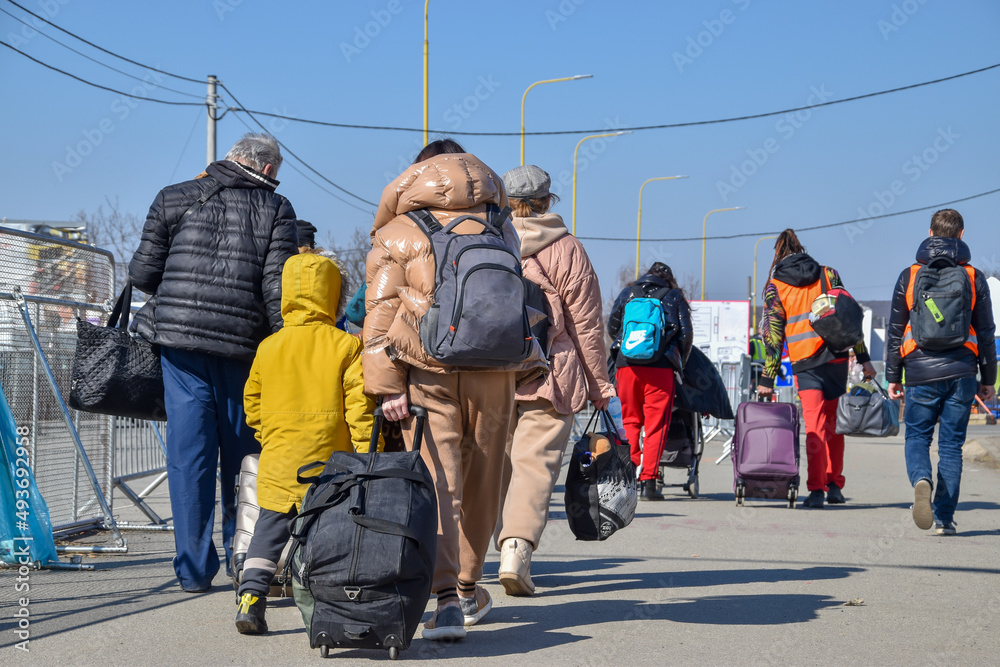
[Reprinted with permission from the website of the United States Conference of Catholic Bishops]
Under U.S. law, a refugee is a person located outside of the United States who is forced to flee their home country due to persecution or a well-founded fear of being persecuted on account of their nationality, race, religion, political opinion, or membership in a particular social group. Refugees do not voluntarily choose to migrate but instead do so due to civil unrest or violence.
What is the Catholic Church’s teaching on refugees?
It is a core Catholic teaching that every human being is created in the image of God and is therefore entitled to human dignity and respect. The Catholic Church views assisting those in need as a fundamental Christian duty that is derived directly from the life of mercy of Christ, who himself was an immigrant and a child of refugees. We as Christians are called to welcome our new neighbors with the same love and compassion we would want ourselves to be shown.
What is the current state of the refugee system internationally?
Worldwide, there are 65.3 million people who have been forced out of their homes (an estimated 34,000 people displaced/day). While the majority of forced migrants remain in their home countries, 21.3 million have been forced to flee and seek refuge in other countries. Over half of these refugees are children. Despite the extent of global displacement, less than 1% of refugees are resettled worldwide. The U.S. traditionally resettles half of these individuals. In Fiscal Year 2016, the U.S. resettled around 85,000 refugees, with most coming from Democratic Republic of Congo, Burma, Ethiopia, Syrian and Iraq.
How does a refugee get identified outside the U.S. as a refugee?
There are three durable solutions to displacement situations: (1) voluntary repatriation, (2) integration into the country of first asylum, or (3) resettlement to a third country. United Nations High Commissioner for Refugees (UNHCR) works to find solutions for each displaced person. UNHCR is generally responsible for identifying and designating individuals as refugees. UNHCR assists in ensuring the safety and well-being of refugees as they await a placement determination. Refugees, once identified, usually wait to be resettled and live in confined refugee camp sites or in urban settings, sometimes as long as a decade.
How does refugee resettlement work in the U.S.?
Annually, the President authorizes the admission of a certain number of refugees into the U.S. This number, described as the “Presidential Determination”, is based on engagement between Congress, the President, the Department of Homeland Security (DHS) and U.S. Department of State (DOS). A refugee is typically referred to the U.S. by UNHCR, an embassy, or an authorized non-governmental organization (NGO). A Resettlement Support Center then facilitates the application process by completing paperwork and gathering biometric and biographical information for the determination and vetting.
During the application process, which typically takes 18-24 months to complete, the prospective refugee remains outside of the U.S. Prospective refugees undergo a rigorous and thorough screening process that includes vetting through databases held by the FBI, the Department of Defense, DOS, and DHS. Further review is conducted if an individual’s application raises national security concerns and, ultimately, will not be resettled in the U.S. if such concerns are not resolved. Admitted refugees are assigned to an experienced resettlement agency in the U.S. prior to arrival in order to help ensure their welcome and successful integration. Once in the U.S., refugees undertake cultural orientation, English lessons, medical evaluations, and other forms of social support.
What is the Catholic Church's Role in U.S. Refugee Resettlement?
The United States Conference of Catholic Bishops’ Migration and Refugee Services (USCCB/MRS) is one of nine NGOs in the United States that resettles refugees. Through cooperative agreements with the federal government, USCCB/MRS works in coordination with partner agencies around the United States to welcome and ensure that the basic needs of each arriving refugee are adequately met.
